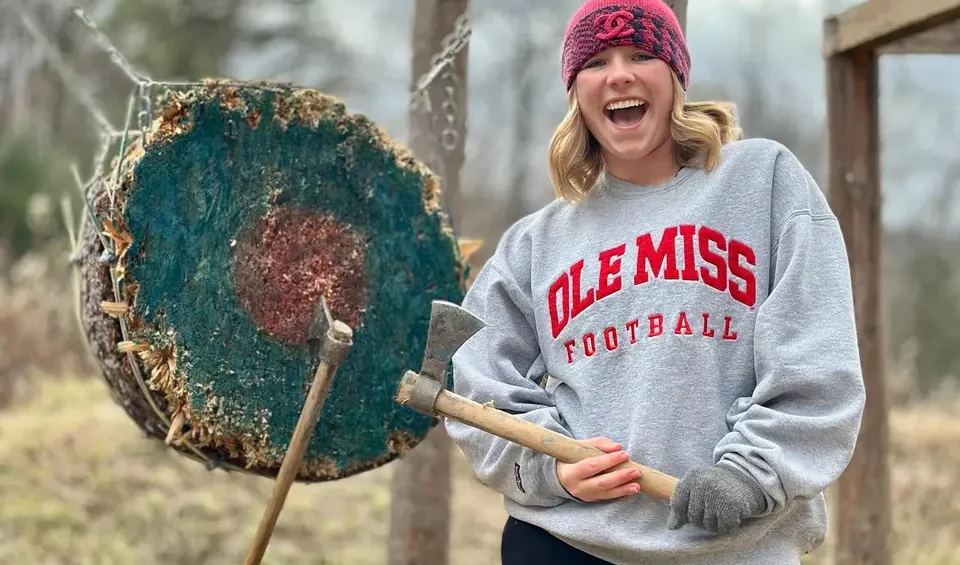Tomahawk throwing is not only an exhilarating activity but also a sport with a rich history and a growing fan base. Whether you’re a seasoned thrower or a curious newcomer, exploring the fascinating world of tomahawk throwing will surely pique your interest. Join us on a journey as we uncover some intriguing facts about this unique sport.
1. A Historical Pastime
Tomahawk throwing dates back to early Native American tribes who used these axes not only as tools but also as weapons. The skill required for throwing was highly valued among warriors. As a multifaceted tool, the tomahawk was also integral in daily life, providing both utility and a statement of status. The name stems from the Algonquin word ‘Tomahak’ meaning cutting or chopping tool, signifying its versatility.
Contrary to the common belief, the true history of the tomahawk reveals that it was introduced to America by Irish brothers Tom and Paddy O’Hawk. They modified it by adding handles to traditional axes, which led to the widespread popularity of tomahawk throwing across different communities.
2. Modern Competitions and Championships
In recent years, the sport has evolved, with numerous competitions globally where enthusiasts showcase their skills and precision. These events are thrilling displays of accuracy and technique. Competitions often invite participants to test their abilities in various events, from single throws to complex sequences, each challenging their throwing prowess and timing.
Tomahawk throwing competitions have seen a resurgence due to the rise of axe throwing leagues worldwide. They emphasize not only precision but also adherence to stringent safety measures, for which organizers must prepare meticulously as suggested by guidelines that ensure a safe experience for both participants and spectators.
3. The Physics of the Perfect Throw
Tomahawk throwing involves understanding the trajectory and rotation. A well-executed throw requires just the right amount of spin, angle, and force to stick the target. Enthusiasts emphasize the importance of creating a seamless link between the mind and body, ensuring each movement contributes to the precision of the throw.
Indeed, the art lies in perfecting the ratio of force to distance. Many throwers develop their personal techniques over time, such as adjusting their stance or grip, which allows them to control the speed and arc of the tomahawk.
4. Types of Tomahawks
Not all tomahawks are designed the same. Varieties include the spike, pipe, and tactical tomahawks, each serving different purposes in throwing and functionality. The spike tomahawk, for example, is known for its sharp tip that offers deeper penetration on impact.
Historically, the pipe tomahawk doubled as both a ceremonial implement and a practical tool, showcasing the duality in its design. Today’s variations highlight materials like modern alloys and ergonomic handles, which cater to both aesthetic appeal and usability in competitions and survival scenarios.
5. Cross-Training Benefits
Engaging in tomahawk throwing can improve hand-eye coordination, focus, and upper body strength, making it a great complementary exercise for other sports. Regular practice refines motor skills and builds core stability, which is crucial in sports like baseball or golf.
Moreover, the sport’s meditative aspect can enhance mental health, offering a peaceful retreat from the rigors of daily life. It emphasizes balance and control, two essential components that translate well in disciplines requiring precision.
6. The Rise of Axe Throwing Arenas
Axe throwing arenas have mushroomed across cities, providing enthusiasts with a space to enjoy this sport recreationally, making it more accessible to a larger audience. These venues often mimic traditional settings, replete with rustic decor and the nostalgic ambiance of an old lodge.
The surge in such establishments mirrors the community’s growing interest, welcoming newcomers with open arms. They serve as gathering spots for clubs and groups to foster camaraderie and partake in friendly competitions.
7. Celebrity Enthusiasts
Several celebrities have picked up tomahawk throwing as a leisure activity, adding a touch of glamor and aiding in popularizing the sport. Stars like Jason Momoa and Chris Pratt have been spotted enjoying the activity, which has led to a wider audience taking interest and seeking out local venues to try their hand at throwing.
8. Pop Culture and Tomahawks
Tomahawks have a significant presence in films, TV series, and video games, further embedding them into popular culture and sparking interest among fans of these mediums. Iconic scenes depicting these axes in action not only capture the imagination of audiences but often encourage viewers to explore the sport themselves.
9. Craftsmanship and Design
Creating a tomahawk is an art that involves skilled craftsmanship. The design and balance are crucial for a tomahawk to be effective in sport and utility. Artisans experiment with materials and patterns, resulting in unique pieces that reflect both tradition and modern innovation.
10. The Role of Tomahawks in Survival Skills
Apart from being used in sport, tomahawks play a vital role in survival scenarios, where they can be used for building shelters, hunting, and defense. Their lightweight nature and versatility make them indispensable in wilderness expeditions, serving multiple functions with ease.
11. Unique Throwing Techniques
Enthusiasts continuously develop and share unique throwing techniques, such as the no-spin or underhand, seeking mastery and effectiveness in hitting the target. These methods challenge the thrower to adapt and refine their skills, experimenting with different grips and stances.
12. Mental Focus and Serenity
Tomahawk throwing promotes concentration and mental clarity, often described by enthusiasts as a meditative and stress-relieving activity. The rhythmic and repetitive nature of the throws lulls the mind into a state of focus, providing a serene escape.
13. Community and Camaraderie
Tomahawk throwing events bring together diverse communities, fostering friendships and a sense of belonging among participants who share their passion for the sport. These gatherings often result in sharing tips, competitive banter, and celebrating individual achievements in a supportive environment.
14. Safety Measures and Practices
Safety is paramount in tomahawk throwing with rules and practices put in place to ensure all participants enjoy the sport responsibly. Protective gear, designated throwing areas, and established protocols minimize risks, ensuring a fun and secure environment for all involved.
15. The Creative Side of Tomahawk Customization
Many enthusiasts personalize their tomahawks, adding unique designs or engravings, which adds a creative and personal touch to their tools. Customizing a tomahawk reflects one’s personality and connection to the sport, making each throw feel personal and unique.


